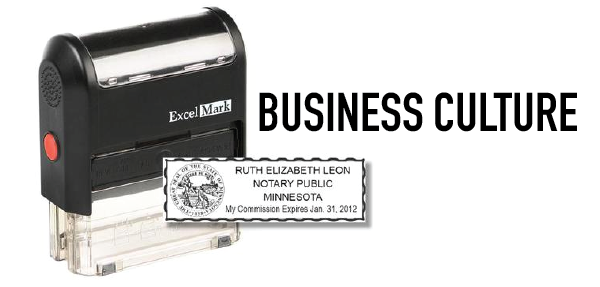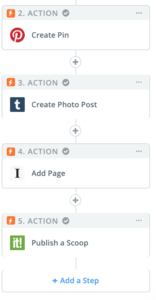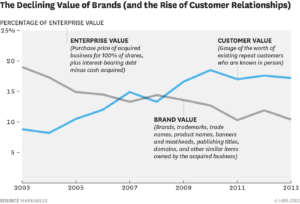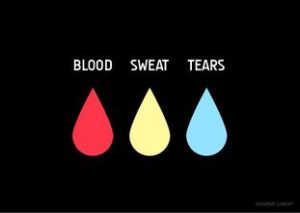

Yet for many small businesses, we do not create a plan for the business culture.

Why?

Most likely not.
Was it?:
Blogs like this can be delivered to your inbox.
Every Thursday.




Every Thursday.

I have worked for a variety of companies that have shared very different opinions on how to use Social Media. Some have wanted to invest heavily in it and have multiple channels, while others have wanted to stay out of it almost completely because they did not want to manage it.
It is funny how companies believe that it is either one or the other when the truth is, there is a MASSIVE amount of space between those two (Of being devoted to social or not investing).
In this blog, I hope to show you that, and why this third option may be the best option for your business.
If you have already read through numerous other social media blogs, then I assume you have heard that the most important thing to do is:
By finding out which social channels your target market uses, you can dedicate your time to a select number of channels to get a better return in comparison to spreading yourself across every single social media channel.
To be clear, I agree 100% with this logic. A B2B marketer should probably not be wasting their time on creating amazing images for Instagram when they know it is very unlikely that it will drive revenue.
What I disagree with is the idea that thee are only two options for a specific channel, invest or not invest. Most commonly this decision comes down to KPIs – “if a social network is not directly driving revenue, then it is not worth any investment”
Pretty solid logic.

But social media sites are incredibly powerful these days, they hold an enormous amount of users, domain authority, and credibility. Saying no to any social network is potentially saying no to more web traffic, brand awareness, and higher domain authority for your own site.
So how can you get the best of both worlds? By mitigating the “investment”
The investment of social media is time. Although it may be cool to spend tons of time on Reddit to get an enormous amount of pointless Karma for your business, you need to find ways to eliminate the time spent on publishing to social network sites.
We have all seen the social spammers that do a repeat of the same thing day in and day out. If that’s what you thought I was going to recommend, then SHAME ON YOU. I have class! (most of the time)
In order to really automate social media well, a company needs to have a content marketing strategy. Or at a bare minimum a part of their website that is continually updated.
A blog is the best option for publishing, but this could also be a product update section, a portfolio, case studies page, etc.
Once you know what content you want to share generate an editable image for both your logo (most likely with square dimension) and a horizontal banner. Every social media network will ask for different sizes, but it is in your best interest to make them all look similar for branding and ease of execution.
Now it the time to start creating social media accounts. There are a lot out there, here is a small list to get you started.
Setting this up is rather simple, there are hundreds of WordPress plugins that will share your content directly to the large social sites.
For the less popular networks, publishing your content automatically may be a little more difficult. Using a third party software, like Zapier, can usually connect and automate you to a lot more unique options.

As stated previously, automating your social media should only be done to those social networks that you believe are not worth investing an enormous amount of time in. If your target market is heavily concentrated in a specific social channel, I recommend creating unique and creative posts that are well thought out.
With that said, there are also scenarios that may be best to automate all channels:
Have questions or comments? Don’t be shy. Leave me a note below.
Have Marketing Carpenter come to you instead of you coming here.

Throughout my blogs you will undoubtedly hear me preach the need for automation across all areas of marketing as well as any operation. Yet, there are negatives to automation.
Look at your inbox right now (I know you won’t but at least imagine it?) How many of your emails are coming from real people? How many emails do you receive that you are emotionally attached to?

Commonly it is a very small percentage. Automated messages (especially in email) are so easy to create and are making it incredibly easy for marketers to reach an enormous amount of prospects in one send.
But at what cost?
Physical cost.. almost nothing. Email still remains one of the most cost effective mediums in marketing…
The cost of loyalty and attachment to a brand is the cost. They are costing companies more and more each year.
Throughout the digital transformation movement we have been looking for ways to automate the processes across all departments. Although in doing so we have also deteriorated the one-on-one relationships that were typically so important to make a sale.
On the plus side, the cost of acquiring customers has dropped but on the negative side, we are seeing the public lose their loyalty for brands more and more each year.

This is because we are no longer aiming to build a relationship, we are looking to push promotions, sales, and nurture campaigns all through automated messaging.
The truth is, every consumer knows what these emails look like, they have become numb to them and they tend to blend together in your inbox. At no point does someone feel like they are special to that brand in a mass email, because they always know that the email was sent to more than just them.
Many emails have attempted to move to plain text to solves this, but truly it is fooling no one, especially when the unsubscribe button is at the bottom.
Anyways, because of this tactic, consumers and businesses do not have the emotional connection with one particular brand, instead they are moving from brand to brand based on whatever variable means the most to them (this is commonly coming down to price).
This does not mean that you your business should shut down your automated messaging or your large email sends (they are most likely generating a positive ROI), but it does mean that you should be looking into initiatives to delight your customers, create one-on-one relationships, and drive emotion.
In a small business with limited resources it can be tough to build this one-on-one relationship effectively, here are a couple:
Every company is dropping in your contact details from a CRM into mass email cadences. These personalizations do wonders for open rates and click rates, but the truth is they nearly do nothing for loyalty.
In order to really build loyalty you need to show information that goes past the conventional informational plug-ins.
This type of information is typically something that you learned from a discussion and that is commonly a personal trait rather than a company trait. Such as; where you went to school, planned or previous vacation spots, etc. by referring back to these non-typical pieces of information, you prove that an individual is listening and a relationship is able to be established.
This can be easily done with just listening to your customers/prospects and maintaining your CRM. If you know your way around marketing automation, it is very easy to put in a workflow. (Automating works if nobody knows)
It feels like everyone has a loyalty program these days. Although do they really drive loyalty? I personally believe they only eliminate even competition but not truly create loyalty.
For example, I loved Delta Airlines. Even before being in their reward club, I preferred their service over any other airline. Even though they are giving me perks to fly with them, I am still cost sensitive. I will happily choose Southwest Airlines if they come in at a lower price.
My point here is that when a rewards program offers the sames incentives to everyone, you can strengthen the preference to use the product, but you do not gain die hard loyalty.
Building Die Hard loyalty takes one-on-one behavior. This can be easily done by sending gifts. Not the typically Holiday gifts companies send “Happy holidays from ABC Company” – that’s not personal at all.

Hungry? Here is the link.
Instead sending them gifts for things then never expected. Some of these events could be; hitting milestones that were not disclosed prior, big news that happened to their company (Google alerts can help you with finding those), promotions, etc.
By catching people by surprise with gifts shows them there is a one-on-one relationship and that they are far more than a typical customer.
Think about your shopping experience, how often is another human involved. If you say “frequently” then one of us is shopping wrong.
eCommerce and large bx stores have made the customer service part of buying only there when you need it. Is this bad? Not for me. I wear giant head phones when I shop for a reason.
On a negative side, it makes it really tough to build an emotional connection. You never interact with a human, meaning whatever buy is just a product, which can most likely be found in numerous locations (AKA your competitors)
In an eCommerce setting we have noticed a huge growth in chatbots for this reason (seriously did Drift just become a massive company overnight?) But that is not enough.
Look to putting an actual human face to the experience of buying. Even better the same human face!

Through today’s marketing platforms you can assign a customer to a current employee and make that employee the name that sends emails, the face that is on chat, the one that is on a note in a shipment, etc. By building that one-on-one experience, you can drive a feeling of being a partnership, rather than just a product?
Did I miss other ways to get up in peoples’ personal space? Let me know in the comments below!
Starting with your email.




^ Simplicity #ForTheMillennials

When you host a dinner party and want to spread the word, how often do you say:
come over to my collection of piping, wood, metal, and wire to have dinner?
I would assume you would not have many takers. Most of your guests and maybe even some family members would offer the quick response of, “I got plans on whatever night you are talking about!”
It’s weird to be that descriptive so, let’s instead be less descriptive in this invite:
You have been cordially invited to a 4 bedroom, 2.5 bath for dinner
This invite is better than the first, but yet… I am sure all the guests will be expecting you to make a sales pitch on why they should buy this amazing property you have invited them to!
Ok. One more time, let’s get even less descriptive.
Dear friends, please come over to a building to drink to our heart’s content and devour an ungodly amount of food.
The ending completely sold me.. but still, most of the guests will still be a little wary of attending because of “a building”.

The point I am trying to make is that in our personal lives we always speak about purpose. You would always tell people to come over to your house or home for dinner.
What the word house or home adds though is the “Why” it is there.
Why is there a collection of piping, wood, metal, and wire? Why is there 4 rooms and 2.5 baths? why is there a building?

House or home, makes it clear that it is for protecting residents, it is a residence, and that there is most likely furniture inside.
By knowing the WHY of something people are comforted and it drives an emotional connection.
Yet, in marketing, we do not always follow the same practices.
Commonly, businesses get so caught up in their offering or what they are creating, that they forget why they are doing it.
To make things even worse industry trends play a big role in this too:
These terms are so popular that companies just drop them into their product descriptions out of nowhere.

By adding these keywords companies are getting further away from why they do what they do and making the product less comprehensive to the end user.
For example, one of my favorite content marketing tools Atomic Reach.
The What – Big Data and Ai for Content marketing
The Why – Grow traffic and conversions using data pulled from your audience
As you can see “the what description” may tell me what the product is, but it has not told me the benefit of having it.
The why gives me a reason to try the new technology in order to boost my marketing performance.
This all seems like basic knowledge, but when you are a business that is so proud of what you have created, you tend to want to tell every person every detail.
The truth is, most people simply do not care.
I use Atomic Reach all the time, not once have I asked them their algorithm, how information is gathered, or how content specifics are scored.
The only thing I care about is that the performance of the content I create increases and that I can produce high-quality marketing with more precision.

I am not saying that companies need to delete all your product details or remove “the WHAT” from all your website and marketing materials.
What I am saying is that “the what” should never lead your marketing or sales pitch.
At times, especially for complex products, specific details are needed to make a final purchasing decision.
This is a great use for a product specifications page, a table on the website, a one-pager, or a brochure.
Anything that the user can quickly obtain to get the more information once it is needed, this is preferably distributed without the need to contact personnel in the company; eliminating sales friction and speeding up the sales process.
To engrave this thought a little bit further, I leave you with Simon Sinek. For a further deep dive into this topic, I would also recommend his book “Start with Why.”
Romantic.. right?

